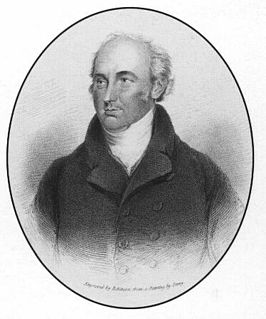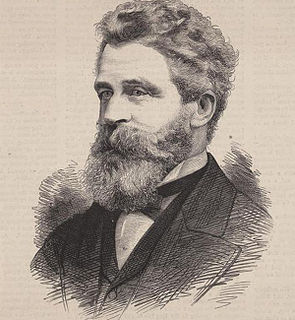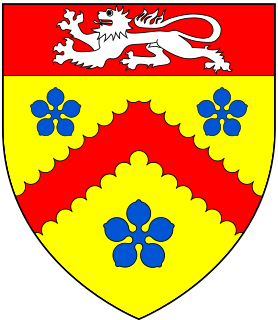
A baronet or the female equivalent, a baronetess, is the holder of a baronetcy, a hereditary title awarded by the British Crown. The title of baronet is mentioned as early as the 14th century, however in its current usage was created by James I of England in 1611 as a means of raising funds for the crown.

Baron Hastings is a title that has been created three times. The first creation was in the Peerage of England in 1290, and is extant. The second creation was in the Peerage of England in 1299, and became extinct on the death of the first holder in c. 1314. The third creation was in the Peerage of England in 1461, and has been in abeyance since 1960.

The Cooper, later Paston-Cooper, later Astley-Cooper Baronetcy, of Gadebridge in the County of Hertford, is a title in the Baronetage of the United Kingdom. It was created on 31 August 1821 for the noted surgeon and anatomist Astley Cooper, with remainder, in default of male issue, to his nephew Astley Paston Cooper, third son of his elder brother Reverend Samuel Lovick Cooper, who succeeded as second Baronet in 1841. The third and fourth Baronets used the surname of Paston-Cooper. The sixth Baronet used the surname of Astley-Cooper, which is also used by the seventh Baronet and present holder of the title.

Sir Jacob Astley, 1st Baronet of Melton Constable Hall, Norfolk was an English Tory politician and baronet.
Sir Isaac Astley, 1st Baronet was an English baronet.

Sir Norton Knatchbull, 1st Baronet was an English politician who sat in the House of Commons at various times between 1640 and 1679.
The Cave, later Cave-Browne, later Cave-Browne-Cave Baronetcy, of Stanford in the County of Northampton, is a title in the Baronetage of England.
There have been five baronetcies created for persons with the surname of White, one in the Baronetage of Great Britain and four in the Baronetage of the United Kingdom. The baronets include Blagdon in the County of Northumberland, Tuxford and Wallingwells in the County of Nottingham, Cotham House in Bristol, Salle Park in the County of Norfolk, and Boulge Hall in the County of Suffolk.

There have been nine baronetcies created for persons with the surname Cooper, one in the Baronetage of England, one in the Baronetage of Ireland and seven in the Baronetage of the United Kingdom.

George Byng, 7th Viscount Torrington, was a British colonial administrator and courtier.

There have been three baronetcies created for persons with the surname Cooke, two in the Baronetage of England and one in the Baronetage of Ireland. One creation is extant as of 2013.

There have been six baronetcies created for members of the Corbet family, four in the Baronetage of England, one in the Baronetage of Great Britain and one in the Baronetage of the United Kingdom. All creations are extinct. The recipients were descendants of the ancient Norman family of Corbet which held substantial estates in Shropshire including Wattlesborough, Caus Castle, Moreton Corbet Castle and Acton Reynald Hall.
The Baronetcy of Dukinfield of Dukinfield, Cheshire was created in the Baronetage of England on 16 June 1665 for Robert Dukinfield, son of Colonel Robert Dukinfield.
John Astley was an English portrait painter and amateur architect, known for his "patronage among a vast circle of fashion" as well as a fortune acquired through marriage.

Sir Edward Astley, 4th Baronet was a British politician who sat in the House of Commons from 1768 to 1790.

Sir Robert Frankland-Russell, 7th Baronet (1784–1849) was an English politician, known also as an artist. In early life he was called Robert Frankland.

The Astley Baronetcy, of Hillmorton in the County of Warwick, was created in the Baronetage of England on 25 June 1660 for Jacob Astley, nephew of the first Baronet of Melton Constable. For more information on this creation, see Baron Hastings.

The Astley Baronetcy, of Patshull in the County of Stafford, was created in the Baronetage of England on 13 August 1662 for Richard Astley. The second Baronet represented Shrewsbury and Shropshire in the House of Commons. The title became extinct on his death in 1772.

The Astley, later Astley-Corbett, later Astley Baronetcy, of Everley in the County of Wiltshire, was created in the Baronetage of the United Kingdom on 15 August 1821 for John Astley, Member of Parliament for Wiltshire and Wiltshire North. He was a descendant of Thomas Astley, younger brother of the first Baronet of Patshull. The third Baronet represented Lincolnshire North in Parliament as a Conservative. He married Eleanor Blanche Mary, daughter of Thomas George Corbett. Their eldest son, Francis, the fourth Baronet, assumed by Royal licence the additional surname of Corbett in 1890. His grandson, Francis, the fifth Baronet, was killed in action in World War II.